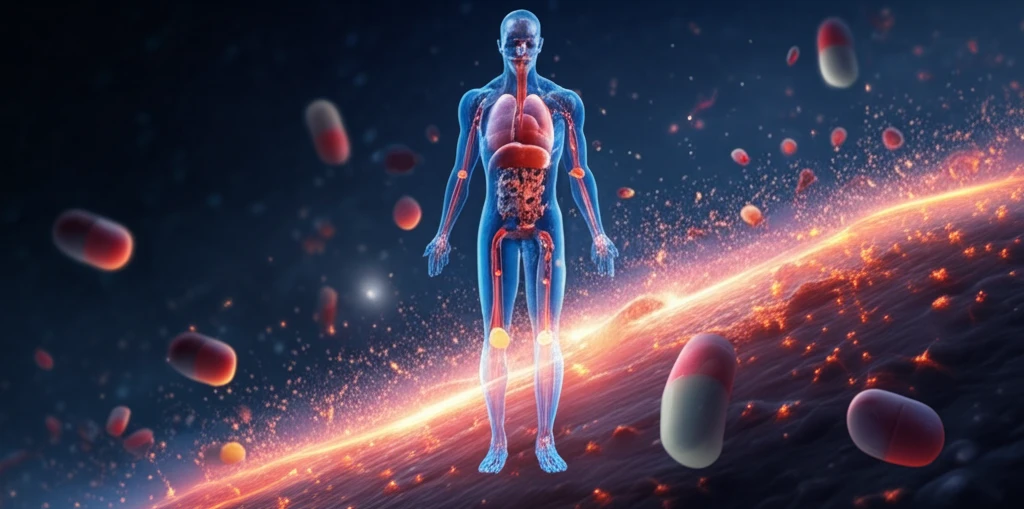
Super Absorbent Hydrogels: Revolutionizing Drug Release for a Healthier Future
"Explore how innovative hydrogels are transforming drug delivery, enhancing treatment efficacy and patient well-being."
In the realm of modern medicine, targeted drug delivery systems (DDSs) are crucial for enhancing treatment efficacy and minimizing side effects. Among the various innovations in this field, super absorbent hydrogels have emerged as promising candidates. These advanced materials offer unique capabilities for controlled drug release, biocompatibility, and biodegradability, making them ideal for a wide range of therapeutic applications.
Traditional drug delivery methods often involve administering medication in large doses, leading to systemic exposure and potential adverse effects. Super absorbent hydrogels, on the other hand, provide a sophisticated approach by encapsulating drugs and releasing them at a controlled rate and specific location. This targeted delivery ensures that the medication reaches the affected area while minimizing exposure to healthy tissues.
This article delves into the fascinating world of super absorbent hydrogels, exploring their synthesis, properties, and applications in drug delivery. We will examine how these innovative materials are revolutionizing medical treatments, improving patient outcomes, and paving the way for a healthier future.
How Do pH-Responsive Hydrogels Work?

At the heart of this innovation lies the pH-responsive nature of these hydrogels. Crafted from materials that react to different acidity levels, these hydrogels can be designed to release drugs in specific parts of the body. For instance, a hydrogel might remain intact in the acidic environment of the stomach but dissolve and release its cargo in the more alkaline conditions of the intestines.
- Synthesis: Acrylic monomers are graft copolymerized onto collagen backbones.
- Crosslinking: Methylene bisacrylamide acts as a crosslinker to stabilize the hydrogel structure.
- pH Sensitivity: Carboxylate groups within the hydrogel respond to changes in pH, triggering swelling or shrinking.
The Future is Hydrogel
Super absorbent hydrogels represent a significant advancement in drug delivery technology, offering unprecedented control over drug release and targeting. Their pH-responsive nature, biocompatibility, and biodegradability make them ideal candidates for a wide range of therapeutic applications. As research in this area continues to advance, we can expect to see even more innovative uses for hydrogels in the years to come, paving the way for personalized medicine and improved patient outcomes.
